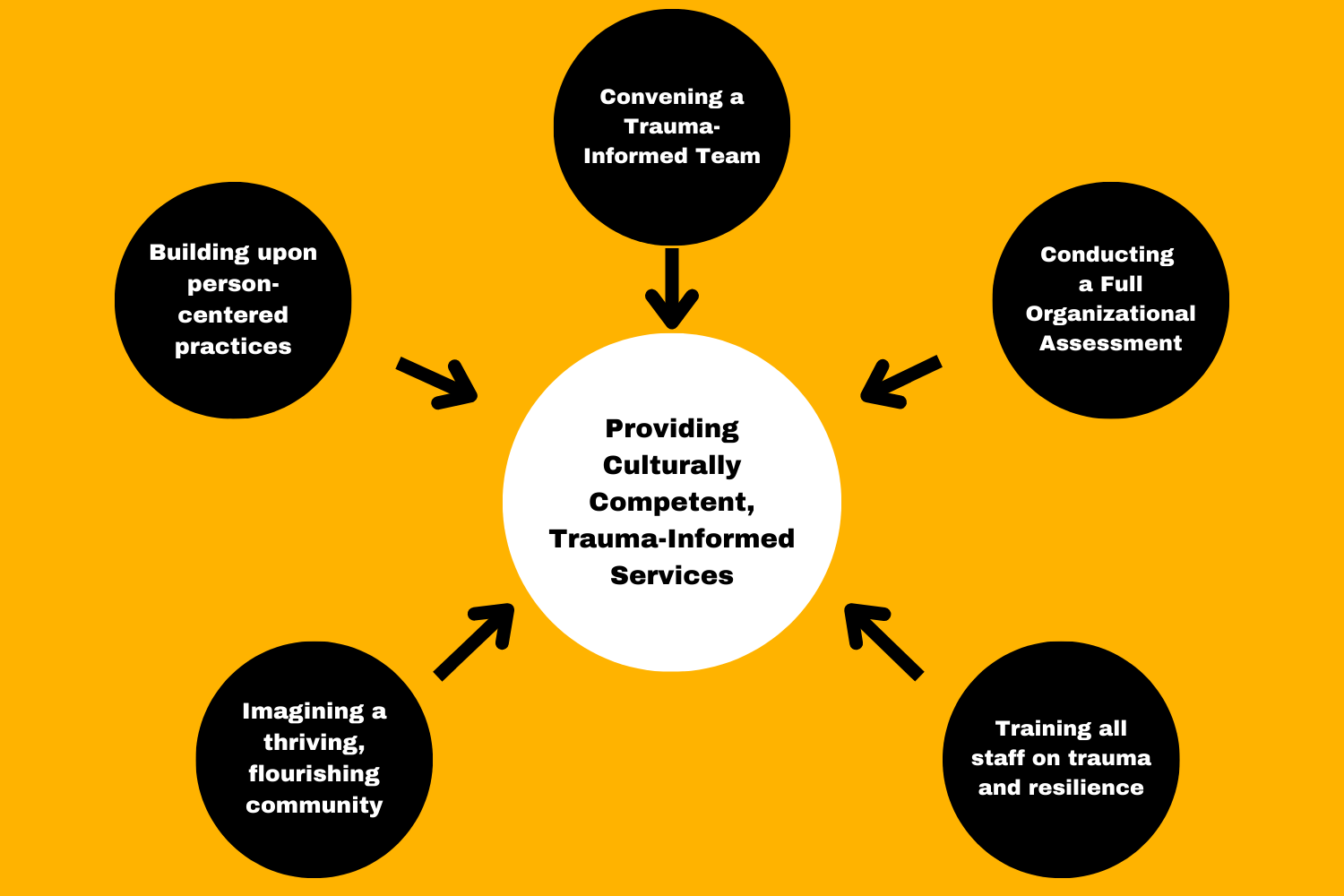
There are as many ways to begin or continue your trauma-informed journey as there are long-term care communities. In fact, as a facility committed to person-centered care, you have likely taken steps toward trauma-informed practices. This toolkit can help you imagine and plan using a trauma-informed lens.
If you prefer to get grounded in how the principles of trauma-informed care relate to person-centered care, begin with the Trauma-Informed Care section. Starting here will give you some background on the Centers for Medicare and Medicaid Services (CMS) regulations related to trauma-informed services. This section also shows how person-centered care relates to trauma-informed care.
Many organizations from various sectors have started their trauma-informed work by forming a team within the organization to guide the process. If you’re ready to share the work and engage many people with developing a strategy, you might start by learning about trauma-informed leadership teams.
Some organizations find it helpful to gain a bird’s eye view of your organization first. If so, you may find it helpful to review frameworks for undertaking an organizational assessment.
All team members have a role to play in creating safe, loving, trauma-informed environments, so you might like to begin training and educating yourself, staff, and residents. You could begin by learning about how trauma-informed practices can support resident wellness. Or, you may find it helpful to explore the impact of trauma and pathways to recovery. If you are looking for self-paced, no or low cost online education, check out training resources for staff.
Transformation begins with imagination. Only when we can imagine a stronger, thriving community where all of our residents and staff flourish, can we build such a space. The section called Toward Healing offers ideas, tools, and best practices for focusing on healing, growth, and flourishing as our ultimate aims in long-term care.